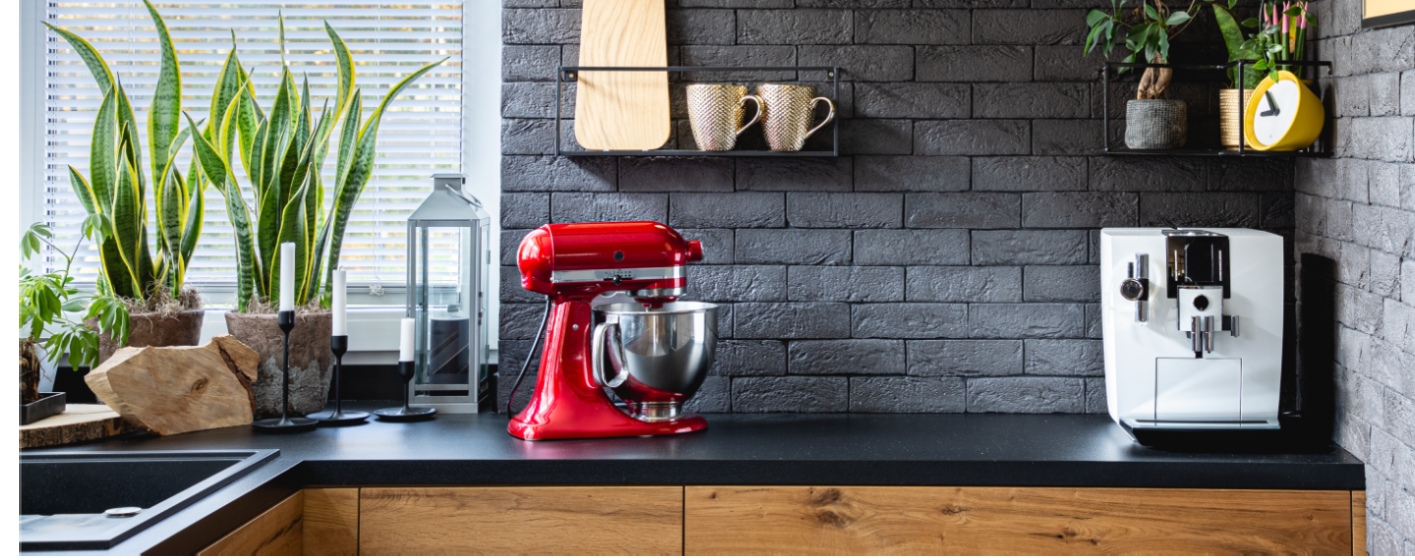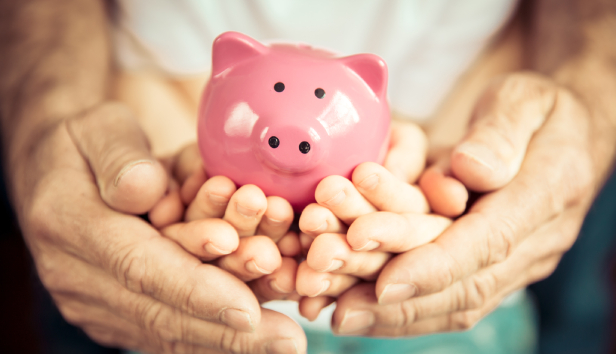
If you’re fed up with feeling like you’re overspending on appliances and other gadgets, veteran technology journalist Carrie Marshall explains how she’s saved huge amounts over the years...
When it comes to gadgets, I have expensive tastes but limited funds. That's not a problem, though, as I can still get the big-name appliances, gadgets and devices that I want.
My most recent purchase was a Smeg juicer that usually sells for £129; I paid £69. It lives with my toaster, coffee machine, kettle and stand mixer, my Ninja air fryer and my Bosch hand mixer. In total, these products cost me £700 less than the retail price most people pay.
How is this possible? Going down the refurbished route.
Before you think I’m just talking about second-hand items, that’s not quite right. Refurbished goods, also known as refurbs or reconditioned, are mostly products that have been returned, patched up where necessary and then resold for considerably less money.
It's not just my kitchen where I’ve been saving: my Dyson vacuum cleaner is a refurb and so is my Dyson hair dryer.
My Lakeland clothes dryer, both of my kids' iPhones and my eldest's hi-fi system were also bought refurbished. When you add those savings to my kitchen appliances, buying refurbished has saved me over £2,300 in the last few years.
Refurbished items are usually products that have been returned to the manufacturer or retailer and are then re-sold after being investigated.
This can be because there was something wrong with them, such as a relatively minor fault like a failed component.
In many cases, the item is inspected, fixed and tested, and then it goes back on sale – but because it's no longer new it can't be sold as a box-fresh item, hence the discount.
But faults aren’t the only reason for a refurb label. It can also refer to devices that have been traded in, such as smartphones and smartwatches, laptops returned after the end of a leasing period or just goods that are second hand but a qualified reseller has returned them to working condition.
Refurbs aren’t just cheap, they can also be safer than buying second-hand because reputable sellers offer a warranty. And they're better for the environment as they stop items going into landfill unnecessarily.
Kewin Charron is Senior Lead Refurbishment Operations Manager at the UK refurb marketplace Back Market, and explains that the process of building just one new phone has a huge environmental footprint.
"Producing a single new smartphone uses a staggering 267kg of raw materials such as copper, iron and zinc, and accessing these raw materials in this quantity requires invasive techniques like mining, blasting, and drilling," he says.
He adds that refurbishing rather than replacing devices reduces the use of raw materials by 94%, uses 95% less water, reduces e-waste [discarded electronic products] by 93% and produces 90% fewer greenhouse gases, according to a report from the French Environment and Energy Management Agency in 2022.
While these items can yield significant savings, it’s worth remembering that there’s no legal definition of ‘refurbished’ in the UK – so someone could sell a second-hand device as ‘refurbished’ despite having done nothing to it.
However, I mitigate this risk by choosing trusted manufacturers and retailers or checking out online reviews of the seller, as well as making sure I'm clear on the warranties or returns policies on offer, before completing the sale.
There are so many sellers out there it's important to trust your gut: if a deal feels off, a seller doesn't look right or the listing doesn’t mention a warranty or says that returns aren’t accepted, I’ll go elsewhere.
If you're a little wary, one of the safest ways to buy refurbished is to go directly to the manufacturer – either from their website or their official eBay channel.
I've done this a lot with brands such as Dyson, Ninja and Apple. While you pay a bit more than you would with some third parties, you get the extra peace of mind of dealing with a household name and still enjoy a price saving.
I've only ever had one refurb go seriously wrong – an Apple computer that wouldn't switch on. But as I bought it directly from the manufacturer, Apple happily took it back, fixed it and returned it without any fuss or argument and it worked well for years afterwards.
The most common issue I've encountered is with sellers who only use generic product marketing images instead of a photo of the actual item you’re buying.
On two occasions I've received ‘as-new’ appliances that were clearly quite well used with visible cosmetic flaws.
It wasn't enough to make me return them – I saved serious sums on both – but it's something to be careful of. Real-life images of what you’re buying make the purchase a little easier, although if it’s a larger, more trustworthy brand I generally have more confidence.
Refurbs sold by third parties may also come without some of the accessories you'd get with the same product if you bought it new, so make sure you know exactly what's in the box.
That's particularly important with items such as food processors or power tools; buying attachments for the former can be expensive, while the latter are often sold as "tool only" without battery packs, chargers or drill / driver bits.
If you’re buying refurbished smartphones, tablets or computers, age matters. Manufacturers only offer support, security fixes and software updates for a certain number of years.
So, for example when Apple launches the latest version of macOS in September 2024, it won’t work on some older Mac computers.
Similarly, the new iPhone operating system, iOS 18, needs an iPhone XR or iPhone SE (second generation) or later. You can find the list of supported devices for macOS and for iOS online.
That’s important because computers, phones and tablets that don’t run the latest software don’t just miss out on the latest features and apps, they’re also increasingly vulnerable to malicious software, viruses and other online dangers.
.jpg?sc=max&mw=800&h=450&la=en&h=731&w=1300&hash=90D23C48CDE2B5B5300EA7D30058D19B)
Many big firms sell refurbished items directly. For example, Apple has a dedicated refurbished section on its online Apple Store where you can pick up Macs, iPads and iPhones for less money.
eBay is home to tons of individual refurbishing firms, but it also has a dedicated Certified Refurbished Channel. Here, some brands, such as Dyson, have their own refurbished stores (in this example, Dyson Outlet).
From fans to fridges, air fryers to hair dryers, power tools to TVs, the items have eBay's blue tick to show that the seller has agreed to certain conditions to qualify as Certified Refurbished:
Many other online retailers also offer refurbished electronics, with money-back guarantees and warranties.
MusicMagpie, for example, sells computers, phones, smartwatches and games consoles with a similar Certified Refurbished scheme to eBay, and Back Market does the same.
Refurbished items from reputable sellers will normally come with a warranty. However, it won’t be as long as you’d get with a new product – it can be as short as three months in some cases, although larger brands tend to offer a year.
With third-party sellers you’ll often find that they set their own warranty periods and refund policies (unless they're selling on some of the Certified Refurbished schemes mentioned above).
It’s important to note that while refurbs are typically graded A, B or C – with Grade A the best, Grade B meaning some minor cosmetic imperfections and Grade C well used with visible signs of wear – there’s no set standard for this.
That means some refurbished sellers’ interpretation of what constitutes a Grade A or B may be considerably more generous than yours. So always read the user reviews for sellers, whether that's for retailers on TrustPilot or individual sellers’ accounts on eBay.

There’s billions sitting unclaimed in shares and dividends – find out if any belongs to you.

From their first savings account to their first home, find out how your gifts can make the biggest impact for your grandchildren
.jpg?la=en&h=354&w=616&hash=653168623B92F3457D40ACA115D37B3E)

.jpg?la=en&h=354&w=616&hash=458B0288E9852F4B63A433E2FDD375E7)



We're here to help you make the most with your money. With a rage of financial services designed with over 50s in mind.